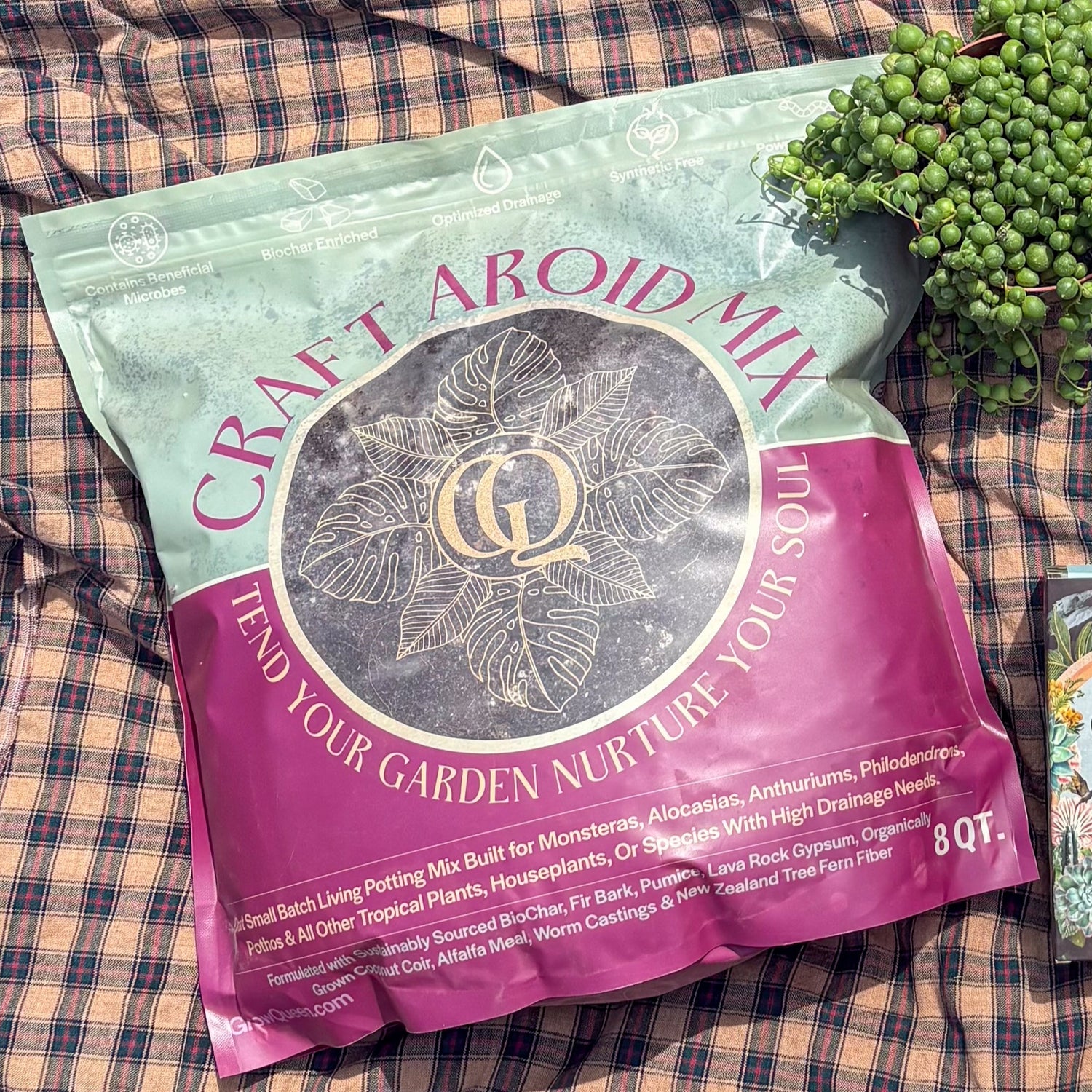Short answer: Yes.
Long answer: It matters a lot for water balance, oxygen at the roots, nutrient uptake, and long-term plant health. The right pot size gives roots room to grow without drowning them in extra wet soil they can’t use.
The science (but not the boring kind)
-
Soil volume controls moisture availability. More soil = more water capacity. If the pot is too big, that extra soil will stay wet long after the roots have used what they need. Wet soil + low oxygen = root rot.
-
Roots need oxygen. Roots breathe. In a too-large pot, the root zone can become anaerobic (low oxygen) while the outer soil still looks moist — roots suffocate and die.
-
Root:soil ratio matters. Ideal is enough roots to access and use water and nutrients in the potting mix. Too little root mass in a very large volume = unused water, slow nutrient uptake, and microbial imbalances.
-
Microbes depend on balance. Beneficial microbes in organic mixes work best when moisture, temperature, and carbon inputs are appropriate. Overly large pots can disrupt that balance.
-
Temperature inertia. Big pots change temperature more slowly; for some plants that prefer quick warm/dry cycles (like succulents), a large pot can be a disadvantage.
What happens if your pot is too big?
-
Soil remains soggy → higher risk of root rot and fungal issues.
-
Plant can become nutrient-starved despite “full” soil (roots can’t reach the whole volume).
-
Overly slow drying means more time for pests like fungus gnats.
-
You’ll water less accurately and risk inconsistent growth.
What happens if your pot is too small?
-
Roots become rootbound, circling the pot and strangling themselves.
-
Water dries out too fast, causing stress and inconsistent hydration.
-
Growth stalls and leaves may yellow or drop.
-
Plant can topple if top growth outpaces root anchoring.
The golden rule (practical)
Choose a new pot 1–2 inches (2.5–5 cm) larger in diameter than the current pot for small to medium plants.
For very large specimens, increase by one pot size (not huge jumps).
For succulents/cacti: increase by ½–1 inch only — they prefer tighter quarters.
Why this works: a modest increase gives roots space to spread without adding a huge volume of unused soil that stays wet.
Quick guidelines by plant type
-
Pothos, philodendrons, most aroids: +1–2" diameter. Use chunky aroid mix.
-
Monstera/large aroids: +1 pot size (not double). Use moss pole + chunky mix.
-
Snake plants & succulents: +½–1" only. Use fast-draining mix and a terracotta pot if you want quicker drying.
-
ZZ, peace lily, pothos in small pots: +1–2" as needed (they tolerate being slightly rootbound).
-
Cactus & other desert succulents: tiny increase; they hate excess volume.
-
Plants with delicate roots (string of hearts, peperomias): be conservative — small steps up.
How to assess before you repot
Repot now if you see any of these signs:
-
Roots circling visible at drainage holes.
-
Roots poking out the top or bottom.
-
Soil pulls away from pot edges or is hydrophobic.
-
Water runs straight through or stays on top.
-
Plant dries out in under 24 hours (soil exhausted).
-
Plant is unstable/tips over.
Repotting best practices (so you don’t regret it)
-
Don’t oversize. Stick to the 1–2" rule.
-
Use the right soil. Choose an airy, well-draining mix (Grow Queen Craft Aroid Mix / chunky mixes for aroids).
-
Loosen the roots gently. Tease circling roots so they grow outward into fresh soil. If severely rootbound, you can slit or trim a little (sanitized shears).
-
Add a base layer of chunky mix to help drainage and avoid a deep pocket of wet soil under roots.
-
Position the root crown at the same depth as before (most houseplants don’t like being buried deeper).
-
Water thoroughly after repotting to settle the soil — then let it drain and adjust watering schedule.
-
Hold off heavy feeding for 2–3 weeks while roots adjust; start with a gentle feed (liquid food at half strength).
-
Keep out of cold drafts and give stable light while the plant recovers.
Pot material matters too
-
Terracotta: breathable, dries faster — great for succulents and plants that dislike wet feet.
-
Ceramic/Glazed: retains moisture longer — good for tropicals in dry homes.
-
Plastic: light, retains moisture; fine if you size correctly.
-
Clear nursery pots: brilliant for seeing root health and watering behavior — especially for propagations and aroids.
Troubleshooting & water strategy after repot
-
If you upsized, expect the topsoil to stay moist longer — water less frequently and check soil depth (finger test).
-
If you see slow wilting after repot, check roots — a few brown/soft roots can be trimmed and the plant given time to recover.
-
Consider top-to-bottom watering after a repot for even rehydration; bottom watering works if your plant prefers slower uptake.
Final checklist before you repot
-
Has the plant been in the pot >12 months or showing root issues? → repot.
-
Is the new pot only 1–2" larger (or ½–1" for succulents)? → good choice.
-
Do you have fresh, airy soil ready? → non-negotiable.
-
Will you wait 2–3 weeks to fertilize heavily? → yes.
The takeaway
Pot size absolutely matters. Too big = soggy soil and rot. Too small = rootbound, stress, and stunted growth. The safest bet: modest increases (1–2" diameter), fresh airy soil, and attentive watering. Do that and your plant will reward you with stronger roots, fuller leaves, and fewer problems.



0 comments